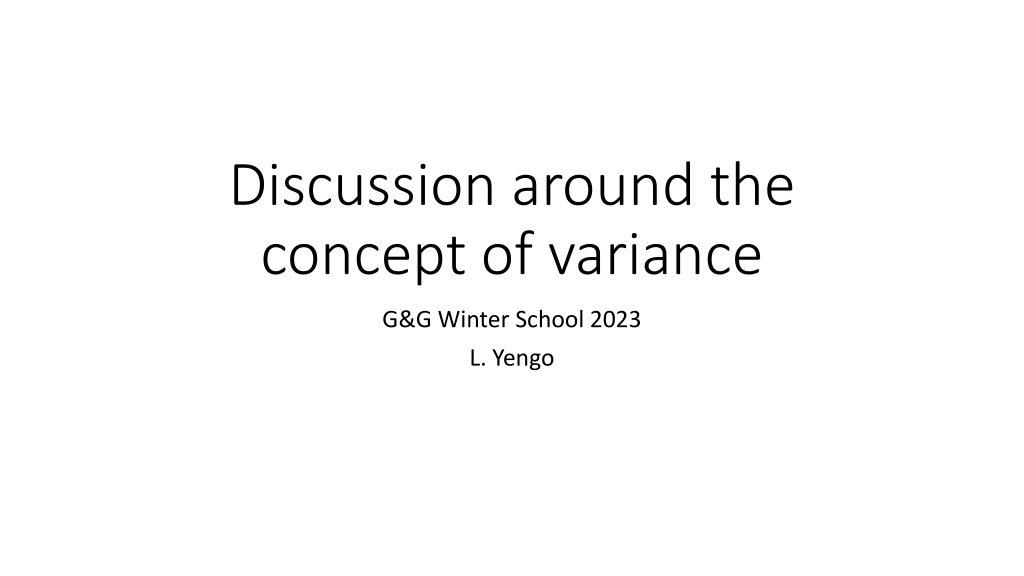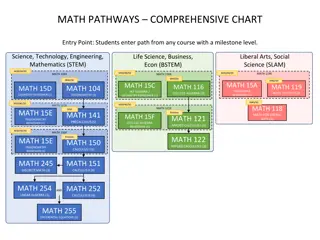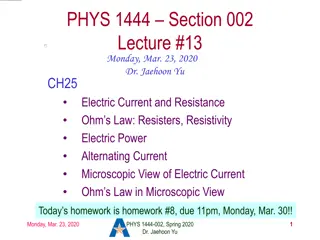
Understanding Variance in Genetics and Traits
Explore the concept of variance in genetics and traits, including its meaning, implications on trait distribution, interpretability across different distributions, and genetic variance models. Learn about the role of variance in explaining differences in traits between sexes and how transformations can impact variance. Dive into genetic variance models like single locus and dominance, as well as decomposing genetic value into mean, additive effect, and dominance deviation. Access an online app for practical applications.
Download Presentation

Please find below an Image/Link to download the presentation.
The content on the website is provided AS IS for your information and personal use only. It may not be sold, licensed, or shared on other websites without obtaining consent from the author. If you encounter any issues during the download, it is possible that the publisher has removed the file from their server.
You are allowed to download the files provided on this website for personal or commercial use, subject to the condition that they are used lawfully. All files are the property of their respective owners.
The content on the website is provided AS IS for your information and personal use only. It may not be sold, licensed, or shared on other websites without obtaining consent from the author.
E N D
Presentation Transcript
Discussion around the concept of variance G&G Winter School 2023 L. Yengo
What does variance mean? What does variance mean? What does variance teach us about the distribution of trait? Is variance always interpretable regardless of the distribution (ordinal / binary / categorical -- multimodality)? What does variance explained mean? e.g., sex and height. => what about when the mean is the same between sexes but the variance is different? Can you think of any transformation of that trait that would lead sex to explain some variance? Can a variance be negative? If so why?
Genetic variance: single locus model Genetic variance: single locus model Model with 1 gene, 2 alleles and additive gene action genotype effect frequency BB a p2 Bb 0 2pq bb -a q2 (p + q = 1) mean = a *p2 + 0*2pq - a*q2 = (p - q)*a V(genetic effect) = genetic variance = VG = E(effect2) E(effect)2 VG = a2 *p2 + 0*2pq + a2*q2 [(p - q)*a]2 = 2pqa2 NB Practical #1 3
Model with dominance Model with dominance Model with 1 gene, 2 alleles and additive and dominant gene action genotype effect frequency BB a p2 Bb d 2pq bb -a q2 (p + q = 1) mean = a *p2 + d*2pq - a*q2 = (p - q)*a + 2pqd V(genetic effect) = VG = E(effect2) E(effect)2 VG = a2 *p2 + d2*2pq + a2*q2 [(p - q)*a + 2pqd]2 = 2pq 2 + (2pqd)2, where = a + (q - p)d NB Practical #1 4
Model with dominance Model with dominance Decompose the genetic value as: g = mean + additive effect + dominance deviation g = mean + paternal allele effect + maternal allele effect + interaction of alleles Genotype BB Bb effect a d frequency p2 2pq mean (p-q)a + 2pqd (p-q)a + 2pqd additive 2q (q-p) dominance dev. -q2d 2pqd bb -a q2 (p-q)a + 2pqd -2p -p2d (p + q = 1) = a + (q - p)d mean(additive effect) = 0, mean(dominance deviation) = 0 cov(additive effect, dominance deviation) = 0 genetic variance = VG = 2pq 2+ (2pqd)2 = VA + VD 5
Online app used in Practical #1 Online app used in Practical #1 https://shiny.cnsgenomics.com/Falconer2 6
Questions Questions Find a configuration where VA/VG>0.9 despite a large dominance deviation. Is VA always 0 when a=0? Why? Find a configuration such that VA=0 but d>0.
Conclusions Additive genetic variance account for dominance (deviation) effects. Dominance variance Is variance always interpretable regardless of the distribution (ordinal / binary / categorical -- multimodality)? What does variance explained mean? e.g., sex and height. => what about when the mean is the same between sexes but the variance is different? Can you think of any transformation of that trait that would lead sex to explain some variance? Can a variance be negative? If so why?






















